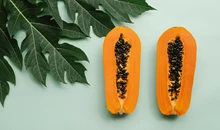
There are different methods of pest management and control. Trap crop information has gained more attention in recent years, correlating with a surge in interest in organic gardening and pesticide-free produce not just for its potential to harm animal life, especially humans, but also because spraying can kill beneficial insects.
Trap cropping is most effective in larger plantings, however, it can be scaled down depending on the crop and trap employed.
What is a Trap crop?
A trap crop is a strategy of using decoy plants to lure agricultural pests, often insects, away from the main crop. To get rid of the pests, the decoy trap plants can be treated or destroyed. Trap crop information is often oriented toward large growers, but the approach may be successfully employed in the home garden as well.
How to Use Trap Crops to Control Pests?
Trap crops can be used in two ways.
Same Species: The initial step is to plant many decoy trap plants of the same species as the main crop. These decoy plants are planted before the main crop and act as food for the pests. After the pests have arrived, but before they have an opportunity to harm the "actual" crop, the decoys are either treated with pesticides or eliminated.
This works especially well with larger plantings, and putting decoy plants all around the perimeter is beneficial because pests normally work from the outside in. Blue hubbard squash is a great trap crop for attracting and keeping cucumber beetles, squash vine borers, and squash bugs away.
Different Species: The second method to employ trap crops is to establish a completely new and more appealing kind of decoy trap plant. Sunflowers, for example, are particularly appealing to stink beetles and leaf-footed bugs, but they must be sown early to bloom in time to intercept the bug's migration. When the destructive insects come, the gardener can employ his favorite method of eradication.
Some gardeners prefer to apply pesticides only on the decoy trap plants, therefore decreasing pesticide use, or eliminating the infected plants. Other gardeners prefer the more natural methods of removing unwanted insects, such as netting, vacuuming, or hand picking.
Interesting Tips and Facts about Trap Cropping to be Used for Pest Management
-
Trap crops account for 20% of most plants of the farmer. To secure the garden, you may need lesser trap crops.
-
Trap cropping is gaining popularity as more gardeners seek natural pest management options.
-
These crops should be sown far in advance of an invasion. Plant your decoys before you begin the rest of the garden so that you may eliminate pests before your main crops grow.
-
Not every pest is attracted to the same plants. You'll need a lot of study, observation, and testing to make this an effective kind of garden pest control. Understand which pests are prone to invading your garden. Learn which plants they prefer and when you can anticipate them to land on them.











